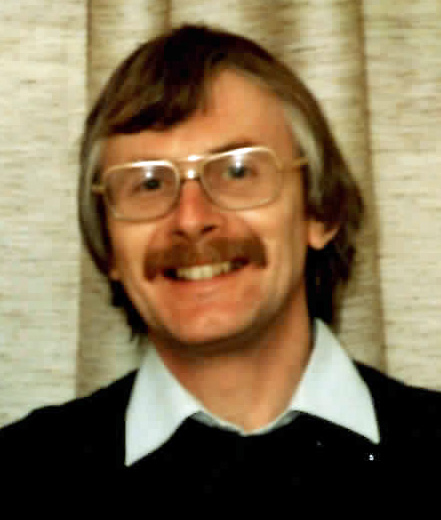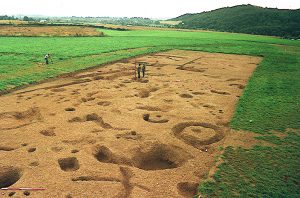Setting up a rescue excavation unit, 1973-75
- 26th September 2019
The second in our series of memories from former County Archaeologists, marking 50 years since Worcestershire’s first was appointed. Alan Hunt succeeded James Bond and was Worcestershire’s second County Archaeologist.
I joined what is now Worcestershire Archaeology as a field officer in 1973 and became County Archaeologist in 1974. My main role was to set up a rescue excavation unit, operating first in Worcestershire and later in the County of Hereford and Worcester.

Alan Hunt
| I became County Archaeologist in 1974 when James Bond moved to Oxfordshire. James wisely prioritised the setting up of a sites and monuments record, which provided an essential tool for archaeological engagement with the planning process and created a strong foundation of knowledge and understanding for everything which has followed in the evolution of Worcestershire archaeology. All his successors are hugely indebted to James’s pioneering work and his legacy, and I want to pay tribute to a greatly gifted archaeologist from whom I learned much and should have learned more.
By 1973 James had not only established an archaeological presence but persuaded the County Council that a rescue excavation unit was also needed, and I was appointed to set that up. Relying mainly on funding from the Department of the Environment, we continued some existing excavation projects at Blackstone and Holt, and made our first moves into urban archaeology when we started a long campaign at Friar Street, Droitwich and carried out a smaller dig in Pershore. However, our responsibilities excluded archaeology in the City of Worcester, an anomaly which occasionally proved unfortunate when development sites did not get a timely archaeological response. In 1974, courtesy of the 1972 Local Government Act, we became part of the County of Hereford and Worcester and our archaeology team crossed the Malverns to excavate a moated site at Much Marcle. A number of very able site directors, supervisors and other excavators came to join us in those early years, albeit on the temporary and insecure basis which was typical of most digging teams at that time. Looking back, I am well aware of our how much we owed to these hardy and committed people; they are too many to name, but if they read this they will know who they are, and I hope they will accept my thanks for their work, often in conditions which would be considered unacceptable now.
Our excavation unit was based in the County Museum at Hartlebury Castle, where the staff showed great patience and tolerance as we put increasing pressure on storage facilities with our digging equipment, finds and archives. We also stretched the budget by acquiring an ex-Army Land Rover which had a leak in the roof, over the driver’s head (my head, usually), that defied all efforts to seal it. And to cap it all, our large caravans which served as site offices and accommodation lived in the Museum car park between excavations; they were essential and effective but far from ornamental, so we really lowered the tone. What the Bishop of Worcester, our neighbour, made of all this we may never know. Seriously, the growing pressure on space soon made us think about the need for a new home, and I was glad to hear, a few years later, about a move to larger premises in Worcester.
But my time at Hartlebury was quite short. In 1975 I went to the Dorset Institute of Higher Education, now Bournemouth University, where administrative roles eventually replaced my archaeological activities. However, in the 1980s and later my Worcestershire backlog has been steadily reduced, thanks mainly to more recent Worcester archaeologists and Derek Hurst in particular. I am greatly impressed and humbled by what has been achieved since I left 44 years ago, and I warmly wish Worcestershire Archaeology much success in the future.
Blackstone Iron Age Site, Wribbenhall. Alan began excavations here in the 1970s and the report is now online. |

Alan was my history teacher in the first year of secondary school (Brierley Hill Grammar, later Crestwood). He was an excellent young teacher who wore a pink suit with flares! And he handled a lively class. Undoubtedly the most gifted of my history teachers
All the best Alan
I was also taught history by Alan at Brierley Hill Grammar, and I ended up as a luthier. Direct causality has not been established, but it’s indicative.
As I went to school in Doitwich and was starting to get into archaeology; I remember the Friar St excavations and the near by Caffe, sausage sandwiches to die for. Also as part of the year who knew Weymouth was best I was luck to have Alan as one of my lecturer’s